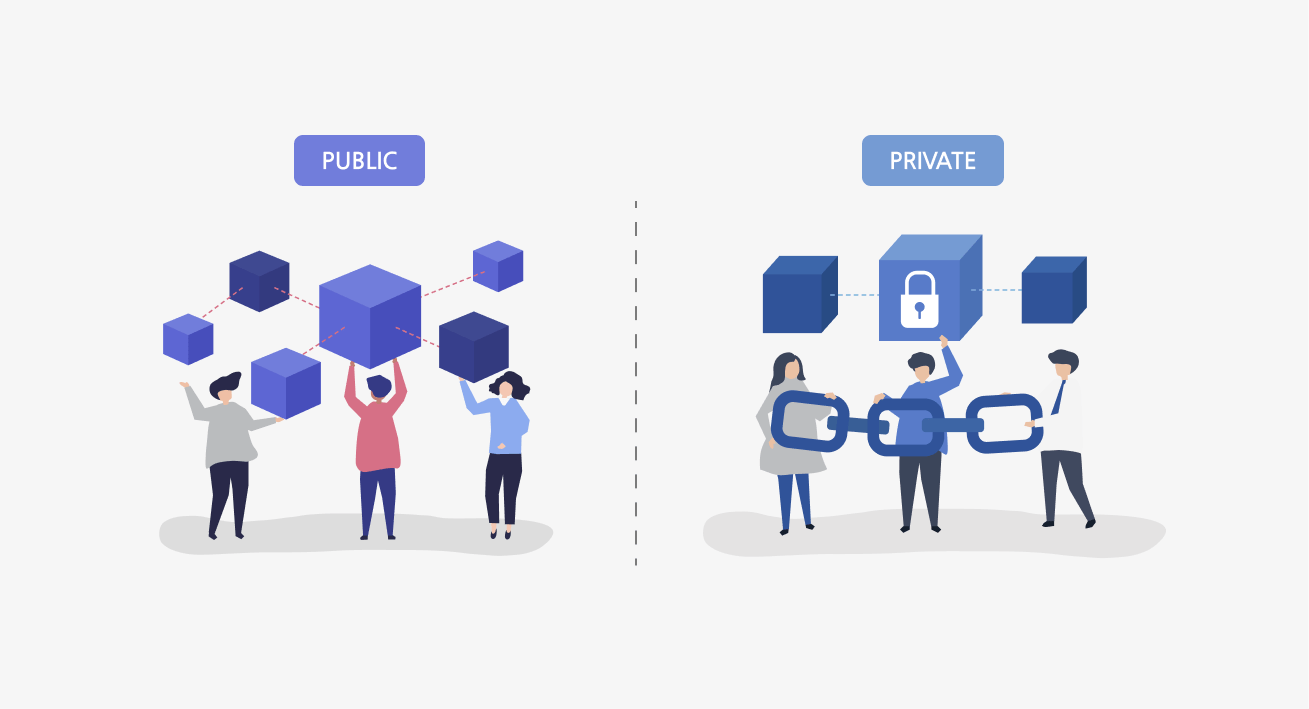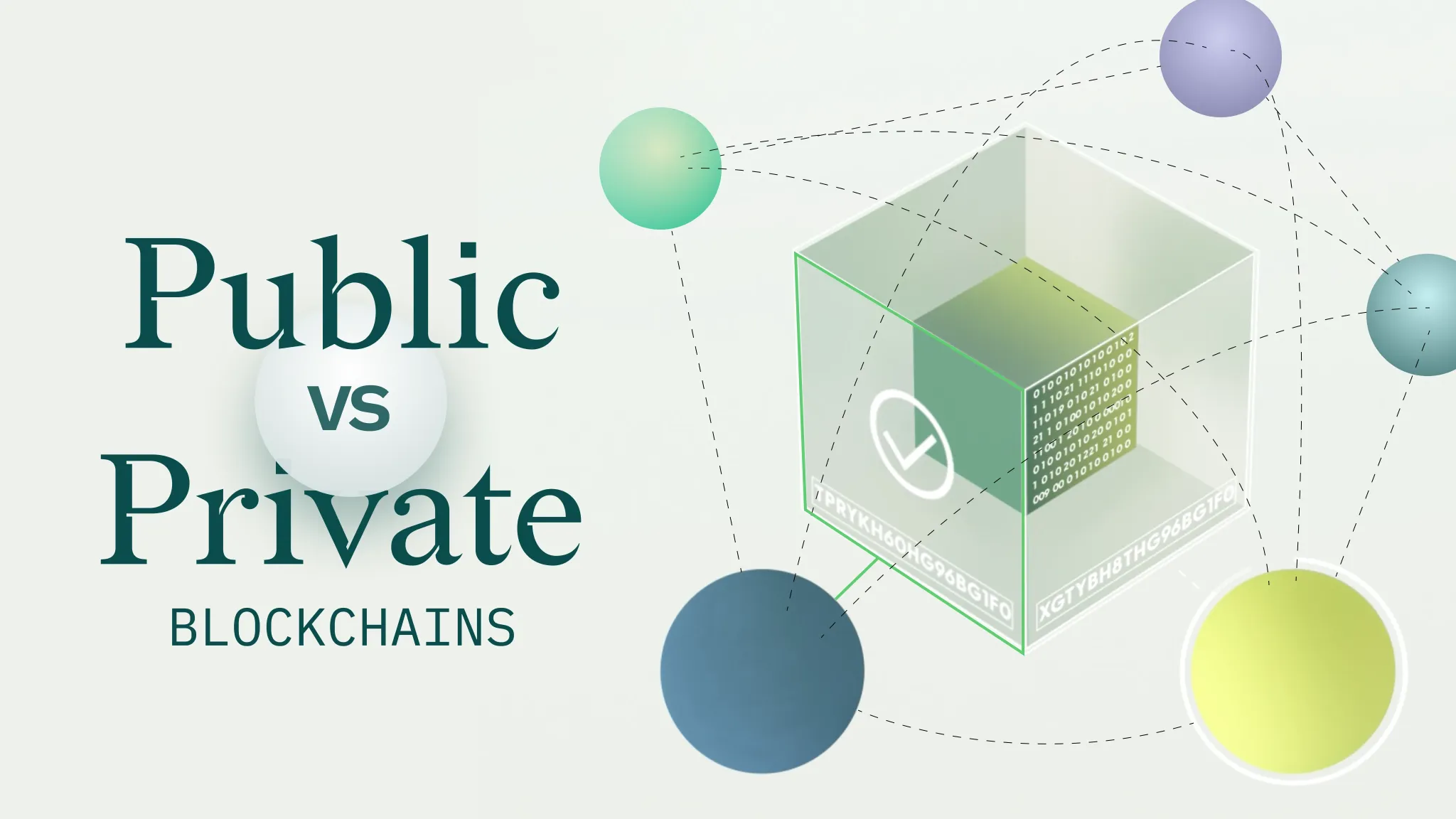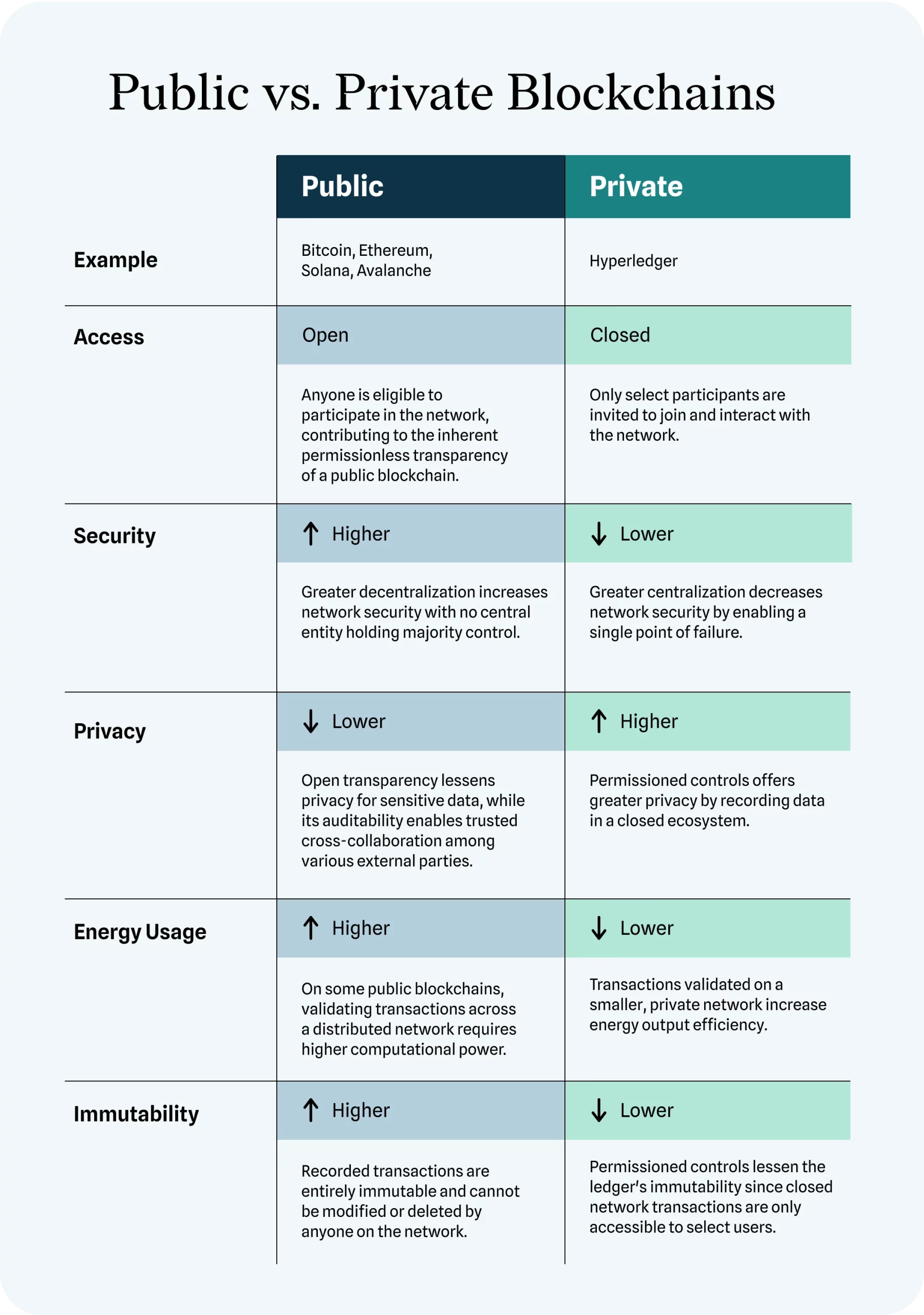Public vs Private Blockchains: A Comparative Analysis

Public vs Private Blockchains:
Public vs Private Blockchains
Access Control and Authorization
Public Blockchains: Public blockchains are open to anyone, allowing anyone to participate in the network, view transaction history, and make transactions without needing permission.
Private Blockchains: Private blockchains are restricted to authorized users or entities. Access is controlled, and participants are typically known and verified.
Transparency and Privacy
Public Blockchains: Public blockchains offer high transparency, as all transactions are visible to anyone. Privacy is limited, as transaction details can be traced.
Private Blockchains: Private blockchains prioritize privacy by limiting access to participants. Transaction details may be selectively shared, providing confidentiality.

Participants and Governance
Public Blockchains: Public blockchains are often decentralized, with a diverse set of participants globally. Governance is typically driven by community consensus.
Private Blockchains: Private blockchains involve known and often centralized participants. Governance can be tailored to the specific needs of the participants.
Decentralization
Public Blockchains: Public blockchains are designed for decentralization, with no single controlling entity. Validators are distributed globally.
Private Blockchains: Private blockchains can be more centralized, with a central authority or organization often having more control.
Transaction Validation and Consensus Mechanisms
Public Blockchains: Public blockchains rely on consensus mechanisms like Proof of Work (PoW) or Proof of Stake (PoS) to validate transactions.
Private Blockchains: Private blockchains may use consensus mechanisms suitable for their specific use case, often favoring efficiency over the energy-intensive PoW.
Use Cases and Industries
Public Blockchains: Public blockchains are commonly used for cryptocurrencies and open applications like decentralized finance (DeFi) and public records.
Private Blockchains: Private blockchains are preferred in industries requiring strict privacy and permission access, such as healthcare or supply chain management.

Security and Trust
Public Blockchains: Public blockchains gain security through decentralization and high participation. Trust is established through consensus mechanisms.
Private Blockchains: Private blockchains prioritize trust among known participants and may employ additional security measures.
Scalability and Performance
Public Blockchains: Public blockchains may face scalability challenges due to their open nature, impacting transaction speed and cost.
Private Blockchains: Private blockchains can be more scalable and performant, as they have fewer participants and controlled usage.
Costs and Maintenance
Public Blockchains: Public blockchains often involve mining or staking costs. Maintenance is distributed among participants.
Private Blockchains: Private blockchains have lower operational costs but may require more centralized maintenance.
Examples and Case Studies
Public Blockchains: Examples include Bitcoin and Ethereum.
Private Blockchains: Examples include Hyperledger Fabric and Corda.
Future Trends and Adoption
Public Blockchains: Public blockchains continue to grow in adoption, with new use cases emerging.
Private Blockchains: Private blockchains are adopted in various industries seeking enhanced privacy and control.
Key Differences between Private and Public Blockchains:
Private Blockchains are restricted to verified and vetted participants, often controlled by a single entity or consortium, ensuring strict access control. In contrast, Public Blockchains are open to anyone, promoting inclusivity and transparency. The main differences lie in access control, governance, and decentralization.

Advantages of Private Blockchains:
- Enhanced Privacy: Private blockchains provide strict control over who can access and view transactions, making them suitable for industries like finance and healthcare that require confidentiality.
- Performance: With fewer participants and controlled consensus mechanisms, private blockchains can offer faster transaction speeds and lower costs compared to public blockchains.
- Customized Governance: Organizations can tailor governance structures to suit their needs, providing greater control over decision-making.
Disadvantages of Private Blockchains:
- Centralization Risk: The centralized nature of many private blockchains can lead to single points of failure and decreased trust.
- Limited Decentralization: Private blockchains sacrifice some of the decentralization benefits of blockchain technology for efficiency and control.
Advantages of Public Blockchains:
- Decentralization: Public blockchains distribute control across a global network, reducing the risk of manipulation or censorship.
- Transparency: Public blockchains offer high transparency, enabling trust without intermediaries.
- Inclusivity: Anyone can participate in public blockchains, fostering innovation and open access.
Disadvantages of Public Blockchains:
- Scalability Challenges: Some public blockchains face scalability issues, leading to slower transaction speeds and higher costs during periods of high activity.
- Limited Privacy: Due to transparency, public blockchains may not be suitable for industries requiring strict data confidentiality.
FAQs
How Public Blockchains Are Used?
Public blockchains find use in cryptocurrencies (e.g., Bitcoin), decentralized applications (DApps), and as a trust layer for various industries. They enable peer-to-peer financial transactions, smart contracts, and tamper-proof record-keeping.
How Private Blockchains Are Used?
Private blockchains are employed in industries like finance, supply chain, and healthcare, where data privacy, controlled access, and efficient transaction processing are paramount. They streamline internal operations, facilitate consortiums, and ensure data integrity among trusted entities.





